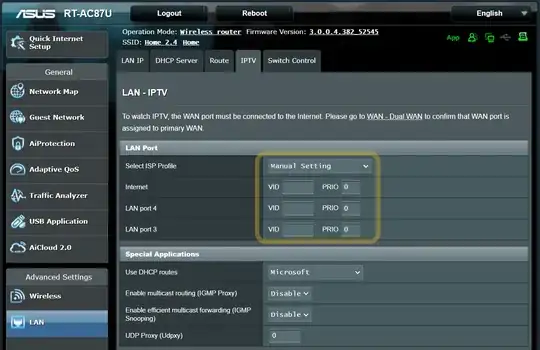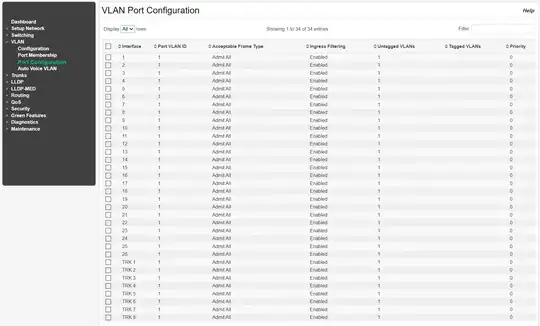Additionally, I'd like each VLAN to be linked to its own subnet
That's already mandatory (more or less). It would actually be a bit more annoying to set up VLANs that didn't have separate subnets while still staying isolated (i.e. not becoming a single VLAN).
Both VLANs should be able to access the internet through the Asus router
Your Asus router doesn't seem to support VLANs directly; at least not with stock Asus firmware. (It's usually easy to do with e.g. OpenWRT or DD-WRT or similar, but it's relatively rare for "home router" products – not limited to Asus – to have that kind of flexibility out of the box.)
Generally you would need, at the very minimum, the ability to create two "LANs" – either by using two separate LAN ports, or by using 802.1Q "tagged" VLANs over a single port. It doesn't seem that Asus firmware offers any of those options for generic LAN usage. The Switch Control tab hints at it being a possibility, but the official manual doesn't even show what's in there, and the LAN IP tab also seems to lack anything useful.
The IPTV section does indeed deal with 802.1Q tagging in a way, but it won't quite work for this; it's made for a very specific purpose and will most likely only be capable of bridging the VLAN directly through – not routing for it.
On the other hand, your HP switch is a "Layer 3" switch – which basically means it can also be a router. That might be your easiest option… although unfortunately the switch doesn't support being a DHCP server; per its manuals, it can only relay the DHCP requests to some other DHCP server (and you can't use the Asus for that). For example, if you had a spare RPi to run "isc-dhcp-server" on, that could do the job.
So if DHCP weren't an issue, I would first enable routing on the L3 switch under "Routing > Global", then create "Routing IP interfaces" on the switch (for any additional VLANs aside from the "main" Asus VLAN). Then, on the Asus router, you would need to create static routes specifying that the additional subnets are reachable via the HP switch/router.
(Alternatively, replace the Asus with another router that has direct support for VLANs, while keeping the Asus as only a Wi-Fi access point.)




